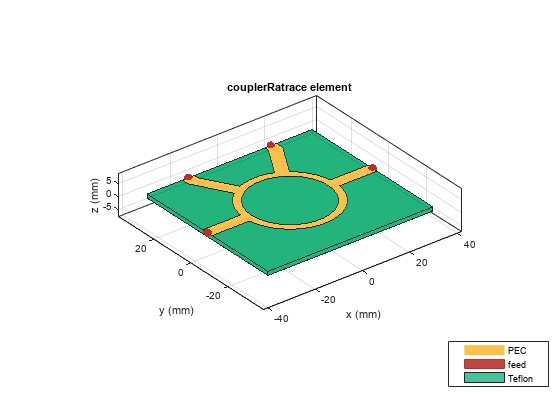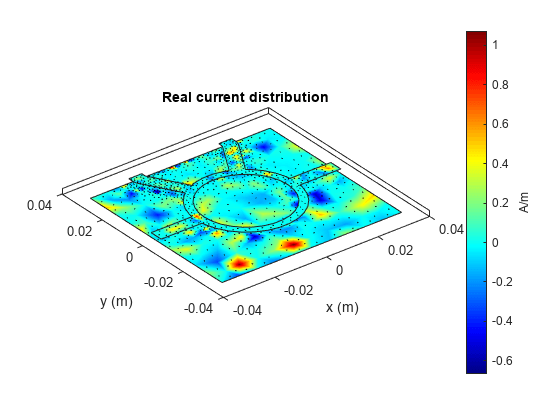couplerRatrace
Description
Use the couplerRatrace object to create an equal-split rat-race
coupler or a 180-degree-ring hybrid.

The rat-race coupler is used as a splitter with a phase shift. When given two inputs, the coupler can create sum and difference ports for added and subtracted power. It also acts as an interface between transmitters and receivers for integrating with an antenna and in building circuits with complex functionality like a comparator with sum and difference ports.
There are four ports and the circumference is 1.5 λ. The phase shift
between the output ports is 180 degrees. When you apply an input at port 1, port 2 and port 4
are coupled ports, where the output has a phase difference of 180 degrees, and port 3 is the
isolated port. When you apply an input at port 3, the output is split equally with same phase
at port 2 and port 4.
To analyze the behavioral model for the rat-race coupler, set the
Behavioral property in the sparameters to
true or 1.
Creation
Description
coupler = couplerRatrace creates a rat-race coupler with
default property values for a frequency of 3 GHz.
coupler = couplerRatrace(
sets Properties using one or more
name-value arguments. For example,
PropertyName=Value)couplerRatrace(PortLineLength=0.0286) creates a rat-race coupler
with a port line length of 0.0286 meters. Properties not specified retain their default
values.
Properties
Object Functions
charge | Calculate and plot charge distribution |
coupling | Calculate coupling factor of coupler |
current | Calculate and plot current distribution |
design | Design rat-race coupler around specified frequency |
directivity | Calculate directivity of coupler |
feedCurrent | Calculate current at feed port |
getZ0 | Calculate characteristic impedance of transmission line |
isolation | Calculate isolation of coupler |
layout | Plot all metal layers and board shape |
mesh | Change and view mesh properties of metal or dielectric in PCB component |
shapes | Extract all metal layer shapes of PCB component |
show | Display PCB component structure or PCB shape |
sparameters | Calculate S-parameters for RF PCB objects |
RFConnector | Create RF connector |
optimize | Optimize pcb catalog object |
EHfields | Electric and magnetic fields of PCB components |
Examples
References
[1] Pozar, David M. Microwave Engineering. 4th ed. Hoboken, NJ: Wiley, 2012.

